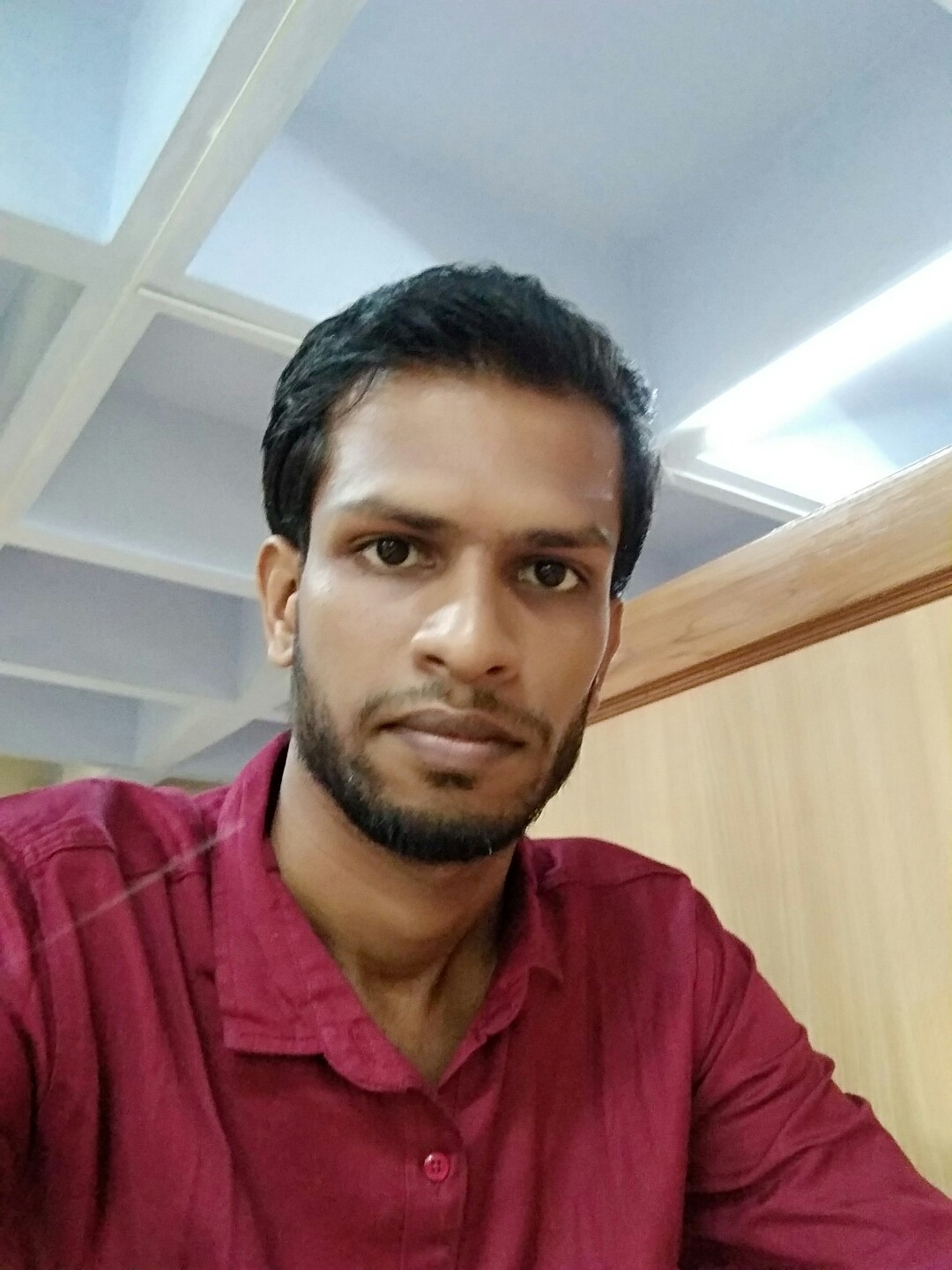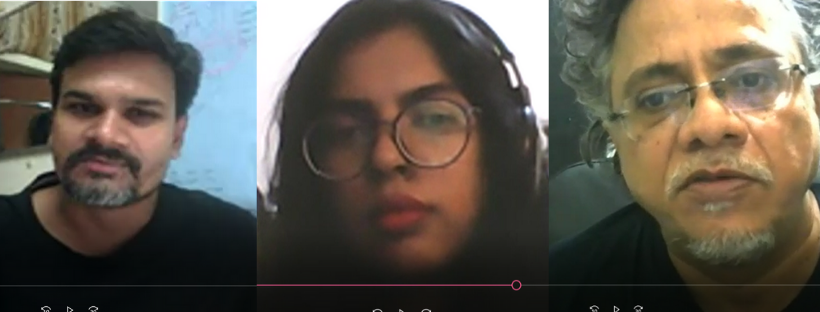Raju Chalwadi
 Prof. Kancha IIaiah Shepherd is a renowned political scientist and an anti-caste activist. He is one of the fiercest critics of the Hindu social order and caste system in present times. He stands apart from his contemporaries in two respects: first, unlike other well-known critics of Castes and the Hindu social order, he is an intellectual-cum-activist who does not believe in sitting within the four walls of his office. Second, and most importantly, he hardly writes for literary purpose alone. His writings always reflect his urgent political ambition of uniting those who he calls ‘Dalit-Bahujan’, and ending the hegemony of upper-castes in the ‘spheres of production.’
Prof. Kancha IIaiah Shepherd is a renowned political scientist and an anti-caste activist. He is one of the fiercest critics of the Hindu social order and caste system in present times. He stands apart from his contemporaries in two respects: first, unlike other well-known critics of Castes and the Hindu social order, he is an intellectual-cum-activist who does not believe in sitting within the four walls of his office. Second, and most importantly, he hardly writes for literary purpose alone. His writings always reflect his urgent political ambition of uniting those who he calls ‘Dalit-Bahujan’, and ending the hegemony of upper-castes in the ‘spheres of production.’
Recently, a chapter from his book Post-Hindu India got translated into Telugu, with the title ‘Samajika Smugglurlu Komatollu‘ (Komatis, social smugglers). Since then, he has come under intense criticism in the two Telugu-speaking states. He received numerous death threats, and narrowly escaped a death traprecently.
Two main reasons have been given for the criticism and attacks on Prof. Ilaiah. One was that he was showing the Vaishya/Baniya community in a bad light, and the other was the use of the term ‘Social Smugglers.’
Before going into the plausibility of his theory and title, let’s have a look at the gist of chapter 9, entitled ‘Social Smugglers’.
Prof. Ilaiah in this chapter proceeds by distinguishing between European class-based and Indian caste-based societies. He argues that in Europe, the society did not impose any restriction on business enterprises. Anybody could engage in any business. Social mobility is therefore possible in this society. In Indian society, the Hindu religion intervened in the process of business, and a particular caste group known as Vaishyas/Baniyas alone were religiously and socially sanctioned to enter into the profession of trade and business. Hence, others, especially the Dalit-Bahujan communities, were not allowed to enter business. In short, Baniyas gained exclusive control over business through the legitimacy derived from Hindu scriptures.
Following this, the Vaishya/Baniya community extracted a huge amount of surplus, as they had a complete monopoly over trade and business. Ilaiah is questioning the legitimacy of this ‘social right’ which was granted exclusively to the Baniyas. Through their monopoly, they built private properties which were casteist in nature, since others were not allowed to do the same. This money was kept underground and was not used for social purposes. He calls this ‘Guptadhana’, and the entire process of monopolization and hiding of wealth as ‘Social Smuggling’. Prof. Ilaiah talks about how this ‘spiritually sanctioned method of doing business’ had become so unquestionable. He argues that the Guptadhana later helped Baniyas in two ways: firstly, it let them accumulate social power and secondly, they used this cash to become ‘Sahukars’ – they lent money to the poor masses by charging exorbitant interest rates, depriving them further and making them more vulnerable. Finally, he says that the Baniya community used corruption and cheating as a way to maintain their hegemonic economic position in the society.
This method of ‘reserved’ business was followed after independence too. He argues that even today, Baniyas enjoy a hegemonic position in the market economy, mainly due to Hindu scriptures which legally and structurally allowed only Baniyas to operate in business.
~
After going through the gist of the chapter, one can easily conclude that Prof. Ilaiah is simply trying to highlight the caste-centered nature of capital and exploitation of the masses, and that he is holding a mirror to the Indian society. A mirror that reflects the privileges being enjoyed by members of a specific caste group. His argument is very simple – that the caste system gave undue advantage to the Baniyas to earn enormous wealth, and such wealth remained confined within their own caste borders. In an article in The Wire, he further argued that such monopoly over capital led to what he called ‘caste control of capital [1]’.

This caste control of capital is also evident at the national level. To support this exposition, one can look at the following examples:
• Most business houses are owned by individuals from this community (if not other Hindus). The Adanis, Ambanis, Birlas, Mittals, Jindals and Ruias all share a similar caste background.
• HDFC Bank, Kotak Bank, Flipkart, Snapdeal, Myntra, Shopclues, Sun Pharmaceuticals, Lupin.Ltd, Piramal Group, Jet Airways, Spice Airlines, Bajaj Autos, Meru Cabs, Ola cabs, Videocon Industries, Vedanta Resources, Indian Express, Zee TV, Dainik Bhaskar, etc., are all owned by members of this community.
It is beyond doubt that the social and economic capital of these individuals helped them build such empires. That is the process Prof. llaiah talks about – the process of accumulation (due to caste advantage) and restriction of capital (within their caste).
Every section of our society has either monopolized or is forced to choose a certain profession. While the so-called ‘pure’ section enjoys it, the Dalit-Bahujan does not. Some take pride in it, while others are humiliated because of it. It is this that llaiah’s mirror shows us – privilege vis-à-vis exploitation. Can anyone deny the fact that it is easier for a Brahmin’s son to become a priest? Or the fact that Manual Scavenging as a field is reserved for untouchables? In a similar way, caste control of capital is evident. All three examples have one thing in common: caste vis-à-vis religious sanction. Hence, by following this, defending the privileges or exploitation of ‘others’ becomes easier.
This process of accumulation and restriction of capital in the long run leads to the creation of a border between ‘them’ and ‘us’. This further creates what Ilaiah calls the ‘caste economy’, in which a member of a particular caste is eligible by birth to be a part of its caste economy. He puts forth the argument that members of former Shudra castes are still stuck in the agrarian sector while the Sahukar economy is controlled by that caste that owned capital since ages, mainly due to their position in the caste system. Isn’t that an injustice?
Does this theory of accumulation, restriction and caste economy have no basis? Is it based on false facts as argued by the Arya Vysya community? No. Any sane person can easily look around and say that the argument is perhaps plausible. Why then have the members of this community and the political leaders who protect them come on to the roads? The answer is simple: those who benefit from such a system of exploitation want to maintain the status quo, and they may be humiliated if history is uncovered.
[1]. https://thewire.in/177385/explaining-social-smuggling-angered-arya-vysyas-two-states/
~~~
Raju Chalwadi is a Ph.D. Candidate in the Humanities and Social Sciences Department, IIT-Bombay. He also holds a Master’s degree in Development Studies from the Tata Institute of Social Sciences, Mumbai.










